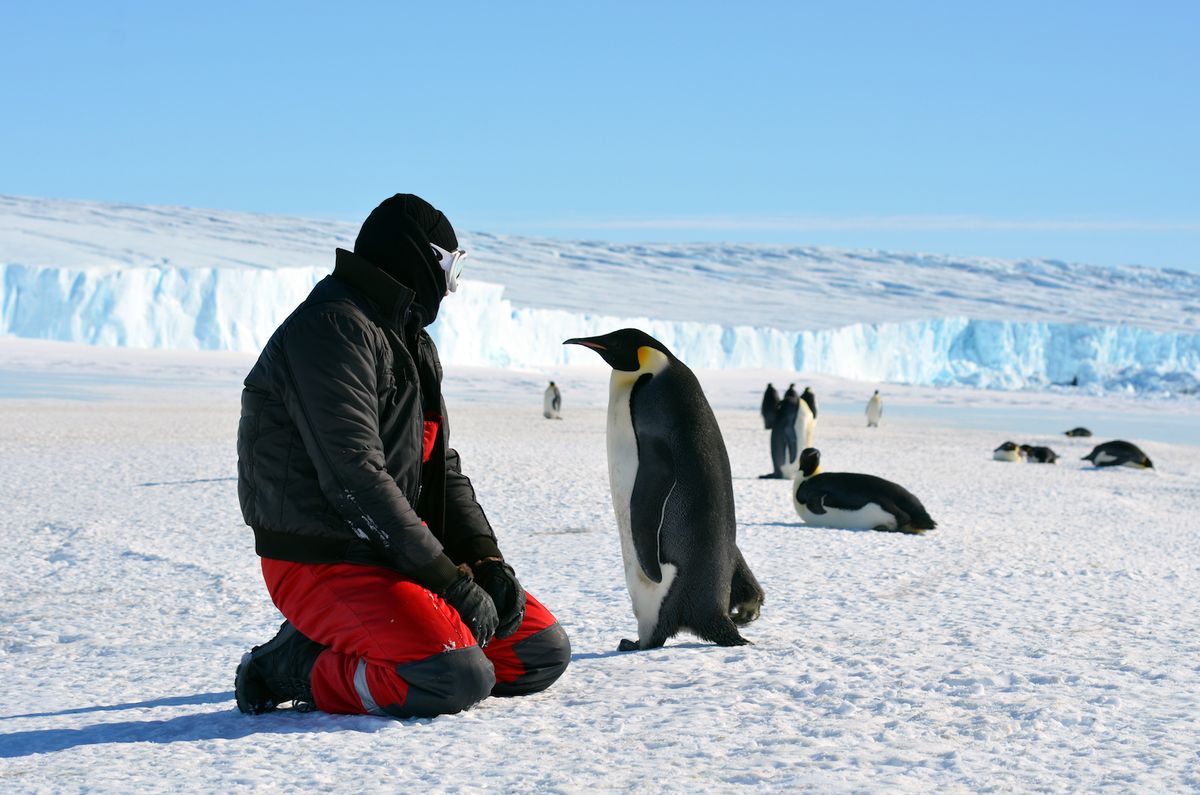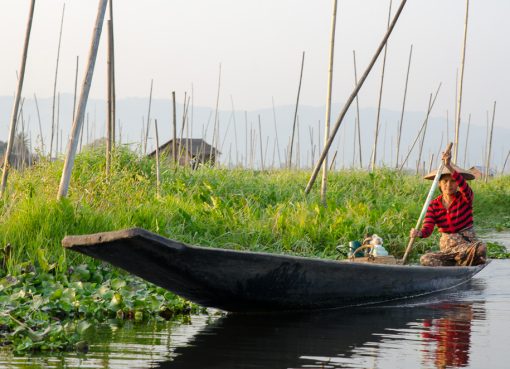Antarctica: Absolutely Stunning Frozen Wilderness

Presenting the enchantingly chill Antarctica: The Frozen Continent Antarctica : With endless icy horizons, stunning glaciers and an extraordinary collection of wildlife by its side to reason with -things- why this place should be everyone’s once in a lifetime destination. Where time appears to stand still, icebergs the size of mountains glide in glassy seas and penguins waddle while whales breach as they are perfectly synchronized with nature autorelease_pf
Located at the extreme south of Earth, Antarctica is the fifth-largest continent which spans over an area of 14.2 million square km. The frozen continent with its cold desolated climate, enjoys average temperatures of -10°C (14°F) on the coast and – 60°C (-76°F) at higher elevations. The continent is covered nearly entirely by an almost 4,800-meter-thick ice sheet and also it as the coldest, driest, windiest part of earth.
Antarctica is one example and it has a nasty blight: the Antarctic Circumpolar Current circles Antarctica as basically a channel to exclude with icy waters. This current, along with the continent being located at a high latitude and containing ice cap of Antarctica gives rise to an uncommonly bitter environment. The winds are so fierce they can reach up to 320 kilometers per hour (200 miles per hour) and the continent sees little percentation, with an mancingduit annual snowfall of only about 200 millimeters (8 inches).
Flora and Fauna of Antarctica
Antarctica is one of the most austere places on earth, yet hosts an amazing spectrum of living things that are more than equipped to live and prosper in this frozen aloneness. The plants in the terrestrial ecosystem are generally lichens, mosses and a small number of species belonging to higher groups such as hair grass (Deschampsia antarctica) and pearlwort. These are tough plants, adapted for the harshness of these conditions — some species can even survive temperatures as low as $deg;C ($58°F)!
But it is the famous marine creatures that are the real stars of Antarctica’s wildlife. The surrounding Southern Ocean supports an array of life; from the elegant wandering albatross to an army of Orca whales. Penguins (referred to as jackasses by the early explorers because of their braying cry), which populate parts of Antarctica such as elegant Emperor penguin, Adélie, Chinstrap and Gentoo. Flightless and robust, with thick feathers that cover streamline bodies built to dive quickly through the frigid sea.
Along with penguins, the Antarctic system harbors a variety of seals including the Weddell Seal. Other species include Crabeater Seals and Leopard Seals. These marine mammals can be spotted lounging on ice floes or in the waters around them. And species such as the Humpback, Minke and Killer whales are served well by what is a soup kitchen for some of the largest animals that have ever lived. They can frequently be spotted from breaching the surface, giving humble instances of their size and solidarity.

Exploration and Discovery of Antarctica
The story of how we know what we do today about the Antarctic is rather captivating as one would expect from a continent that captures it in so many ways. Expect for it being the explorers version of angry voicemails (though we do that with icebergs all the time)But its existence was much debated and though reported by early mariners, not actually sighted until some two centuries later- in unseemly part to tumultuously bad bitch slap fights.
Antarctica was first sighted in 1820 by a Russian naval expedition led by Fabian von Bellingshausen and Mikhail Lazarev. In the subsequent century, several exploration expeditions from various nations (US and UK among them) discovered these immense uncharted areas pushing even deeper into those lands.
The most reknowned and celebrated expeditions being that of British explorer Ernest Shackleton, – the unexpectedly vengeful campaign to traverse the entire antarctic continent from sea-to-sea in 1914-17 more than passing into a legendary accounts. Despite the fact that Shackleton’s expedition on Endurance was unsuccessful in reaching its ultimate goal, his dynamic leadership and heroic efforts from both he and his crew-mates during their struggles against difficult circumstances have earned him a lasting legacy as one of historys best polar explorers.
Research in Antarctica
Antarctica has a long tradition of scientific research, engaging scientists from across the globe to study its extreme environment and assess its role in global climate processes. Antarctica has indeed become an important laboratory for the study of everything from climate change and atmospheric research to the diverse flora and fauna found on this unique continent, but also a microscope into Earth’s past, present, future.
Among the leading areas of Antarctic research is climate change and its effect on the continent’s ice sheets and glaciers. Over the past decades, scientist observing changes to the enormous Antarctic ice sheet has been important because it can provide insights into what may happen to other parts of earth as climate change becomes more pronounced. Since Antarctica’s ice sheets store so much water, they have global implications – melt them at the wrong time and everyone could literally pay a price. And that makes what we’re doing now especially frightening, as destruction or even slight changes can lead to (long-term) catastrophe of apocalyptic proportions for all humanity!
Another key scientific effort in Antarctica is the research of its exceptional, resilient life forms. Researchers have found abundant microbial life within the soil, lakes and glaciers of this continent, as well as a variety of larger organisms that-like some extremophiles on Earth-have evolved to live in those extreme conditions. This research has broadened not only our knowledge about the extremes of life on Earth but also given us critical insights into what types of environments will we find irony in if and when it turns out there is a type alien biology out yonder.

Tourism in Antarctica
While Antarctica has long been the domain of scientists, explorers, and researchers, in recent decades, the continent has also emerged as a popular tourist destination for those seeking the ultimate adventure. Drawn by the promise of untamed wilderness, stunning landscapes, and the opportunity to witness the continent’s unique wildlife, thousands of visitors flock to Antarctica each year to experience its breathtaking beauty.
The most common way to visit Antarctica is by taking a cruise, which allows visitors to explore the continent’s coastline and surrounding waters. These expeditions typically depart from the southern tip of South America, with the journey across the Drake Passage – the notoriously rough stretch of water between South America and Antarctica – often considered a rite of passage for Antarctic travelers.
Once in Antarctica, visitors can expect to be treated to a dazzling array of sights and experiences. From the towering glaciers and icebergs that dot the coastline to the playful antics of the continent’s resident penguin colonies, there is no shortage of awe-inspiring moments. Many tours also offer the opportunity to observe the continent’s diverse marine life, including whales, seals, and seabirds, as well as the chance to set foot on the Antarctic landmass itself.
Environmental Issues in Antarctica
Despite its remote location and relatively low levels of human activity, Antarctica is not immune to the environmental challenges facing the rest of the planet. In fact, the continent’s fragile ecosystem is particularly vulnerable to the impacts of climate change, pollution, and other human-induced threats.
One of the most pressing issues facing Antarctica is the rapid melting of its ice sheets and glaciers. As global temperatures rise, the continent’s ice reserves are shrinking at an alarming rate, with the potential to significantly impact global sea levels and disrupt the delicate balance of the Earth’s climate system. This melting also poses a direct threat to the continent’s unique flora and fauna, which have evolved to thrive in the cold, icy conditions.
In addition to climate change, Antarctica is also facing threats from pollution and the introduction of non-native species. The continent’s remoteness and lack of permanent human settlements have helped to preserve its pristine environment, but the increasing presence of scientific research stations, tourist activities, and the transport of goods and materials to the region have introduced new challenges. From the accumulation of plastic waste to the potential introduction of invasive species, these human-induced pressures are putting the continent’s fragile ecosystems at risk.
Antarctica Treaty System
In recognition of the unique challenges and importance of Antarctica, the international community has come together to establish a comprehensive system of governance and protection for the continent. The Antarctic Treaty System, which was first signed in 1959, is a landmark agreement that has been instrumental in preserving the continent’s pristine environment and promoting scientific collaboration and exploration.
At the heart of the Antarctic Treaty System is the Antarctic Treaty itself, which has been signed by over 50 countries and establishes Antarctica as a continent dedicated to peace and science. The treaty prohibits any military activities, mining, or other resource extraction, and instead encourages the pursuit of scientific research and the protection of the continent’s unique ecosystems.
In addition to the Antarctic Treaty, the system also includes a number of other agreements and protocols that address specific environmental and governance issues. These include the Convention for the Conservation of Antarctic Marine Living Resources, which aims to protect the continent’s marine ecosystems, and the Protocol on Environmental Protection to the Antarctic Treaty, which sets strict guidelines for human activities and the prevention of environmental damage.

Famous Expeditions to Antarctica
Throughout the history of Antarctic exploration, there have been a number of iconic expeditions that have captured the public’s imagination and left an indelible mark on the continent’s legacy. From the heroic feats of early explorers to the groundbreaking scientific discoveries of modern-day researchers, these expeditions have contributed to our understanding and appreciation of this frozen wilderness.
One of the most famous and celebrated expeditions was that of Ernest Shackleton, the British explorer who led the ill-fated Endurance expedition in 1914-1917. Despite the expedition’s ultimate failure to reach the South Pole, Shackleton’s remarkable leadership and the crew’s heroic actions in the face of adversity have cemented their place in history as some of the greatest polar explorers of all time.
Another iconic expedition was that of Robert Falcon Scott, the British explorer who led two expeditions to Antarctica in the early 20th century. While Scott’s first expedition in 1901-1904 was a relative success, his second expedition in 1910-1912 ended in tragedy, with Scott and his entire team perishing on their return journey from the South Pole. Despite this heartbreaking outcome, Scott’s expeditions have become legendary for their spirit of adventure and scientific curiosity.
In more recent times, the expeditions of modern-day scientists and researchers have continued to push the boundaries of our understanding of Antarctica. From the groundbreaking climate change research of the International Geophysical Year in the 1950s to the ongoing exploration of the continent’s unique ecosystems, these expeditions have been instrumental in shaping our knowledge of this remarkable continent.
Conclusion
As we bid farewell to the mesmerizing world of Antarctica, it is clear that this frozen continent is a place of unparalleled beauty, uncompromising resilience, and profound scientific importance. From its vast icy landscapes and breathtaking glaciers to its diverse and resilient wildlife, Antarctica has captured the imagination of explorers, scientists, and adventurers alike for centuries. If you like reading this article then please consider reading our article about Bika Ambon.



